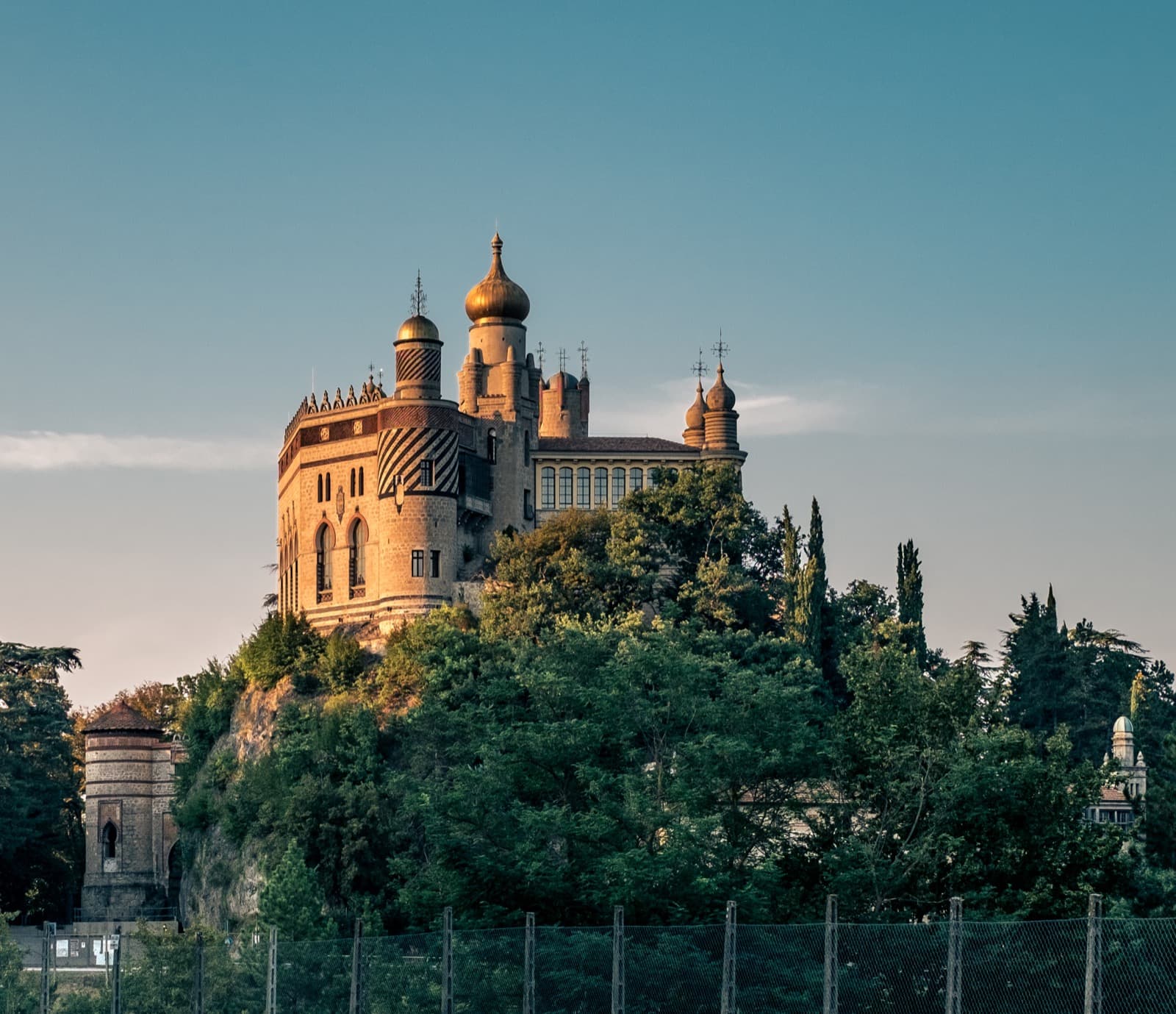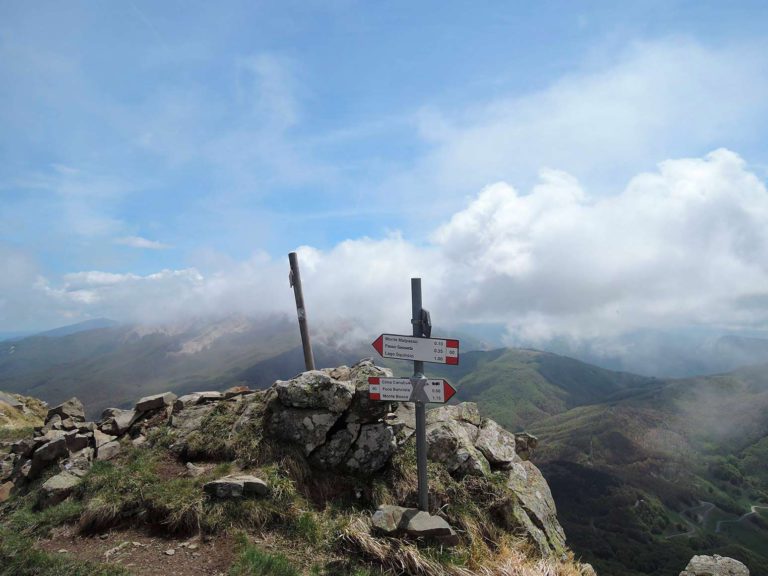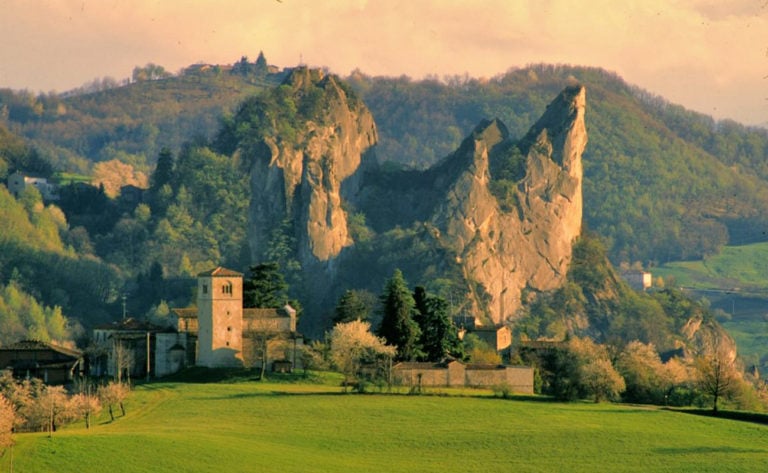
Time
24 h
The Labante Caves in Castel d’Aiano are karst formations located in the Emilian Apennines, about 45 kilometres away from Bologna.
But they’re much more than that. This natural site is a unique place, known to speleologists all over Italy because of a very special phenomenon that is hard to find in other areas of the country.
But let’s take a step back: how did these caves form?
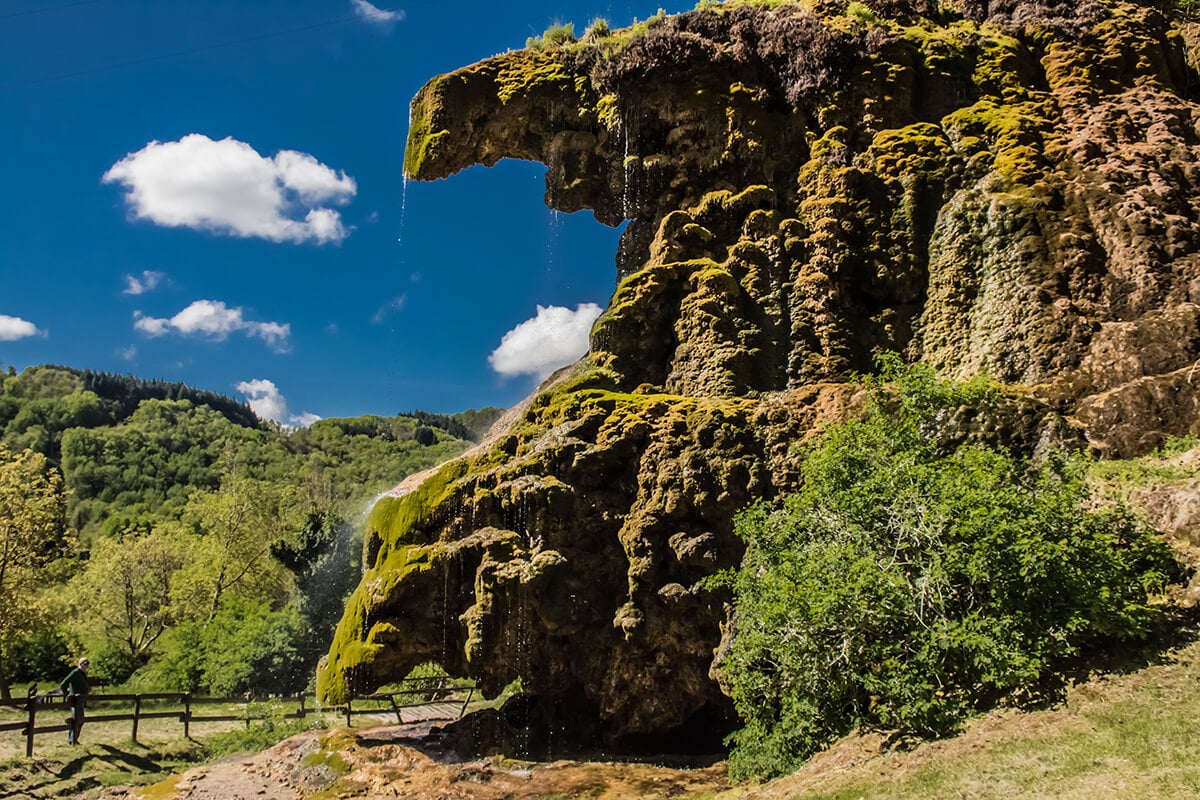
These caves were formed by the ancient San Cristoforo spring, which gushes out at a height of 622 metres and supplies water to the surrounding villages. This spring also feeds the waterfall that falls from the top of the caves into the pond below, creating a very scenic effect.
The waters of Labante contain high concentrations of calcium carbonate, which slowly deposited here over the centuries and created the travertine rocks we can see today. Therefore, the Labante caves did not originate from groundwater erosion but rather from the long process of limestone accumulation on the rocks.
This is why the Labante Caves are called primary caves, i.e. formed together with the surrounding rocks. A quite rare phenomenon, but it is not the only peculiar thing about them.
Primary caves in travertine are usually no more than 4-5 metres in length. Those in Labante measure no less than 54 metres and have a difference in height of 12metres. These record numbers make them the largest caves of their kind in Italy, as well as a Site of Community Importance (SCI).
Visiting the Labante Caves
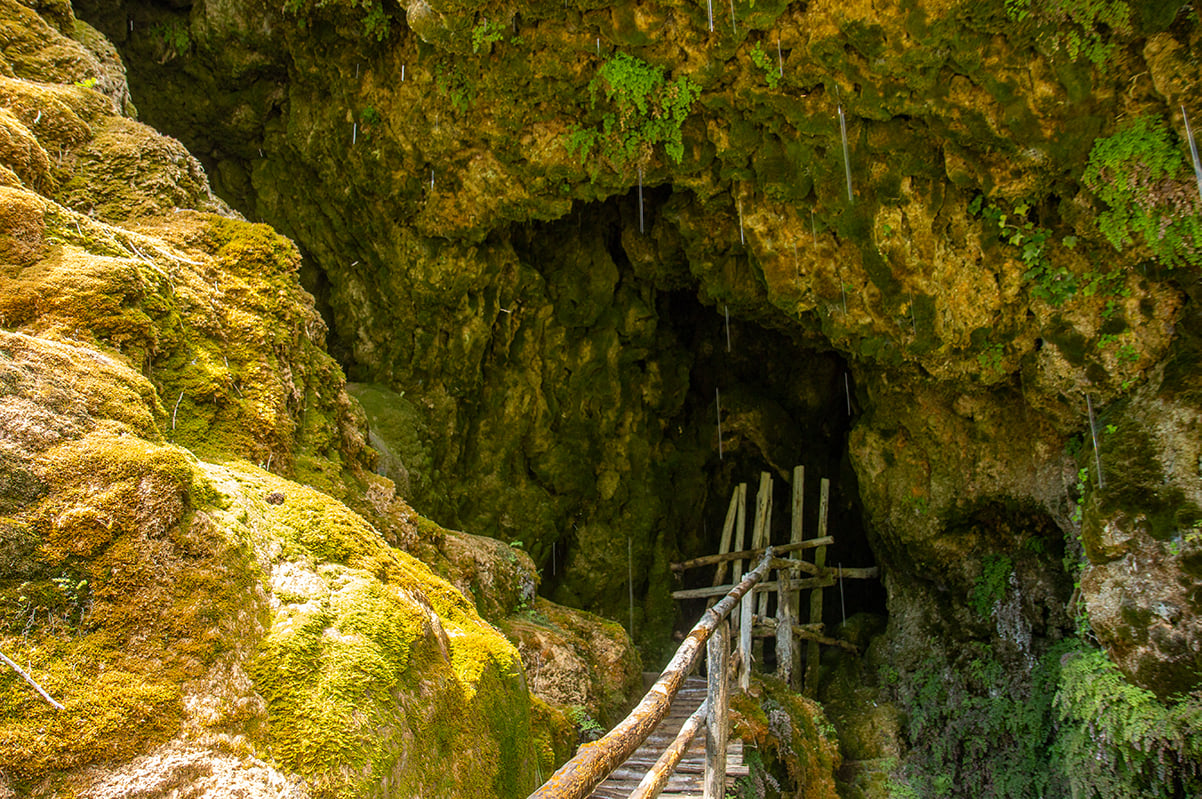
Although the caves are not accessible to visitors except for short stretches, you can still see them up close and observe some typical phenomena of this place.
For instance, as you approach the rocks you will notice that they look quite porous and their surface is full of small holes resembling bubbles. These formations are caused by the emission of carbon dioxide that makes the travertine look like a sponge. It is no coincidence then that travertine is called ‘sponga‘ or ‘spunga‘ in the local dialect.
Just think that the travertine of the Labante Caves was used by the Etruscans in various sites that can still be visited today, such as the necropolis of Kainua in Marzabotto (6th-5th century B.C.), and for the construction of the tombs at the Giardini Margherita park in Bologna.
Another typical feature of these caves are the so-called ‘Labante pearls‘ or cave pearls, which can be spotted on the cave floor. Their scientific name is pisolite and the comparison with pearls is quite apt given their similarity to the precious spheres produced by oysters.
Finally, while visiting the Labante Caves remember that you are in a living place whose rocks are still changing their shape today due to the endless flow of water. The most striking example of this phenomenon is the rock from which the waterfall gushes out, which has stretched further and further forward over time.
How to get to the Labante Caves
The Labante Caves are located in Castel d’Aiano (Bologna), near the church of San Cristoforo di Labante. You can reach them by car from Bologna in just over an hour and park for free in the area next to the church. From there, you will get to the caves in a short time.
The waterfall is surrounded by a nice park equipped with picnic tables, that offers many possibilities for hikers. Those wishing to explore the area can take one of the picturesque CAI trails that branch off just a few metres from the waterfall.
Author

Maria Grazia Masotti
An eternal dreamer, but I try to stay grounded. I was raised in the countryside but I love big cities. I’m always ready for a trip, as long as it’s sustainable.
You may also like
Rocchetta Mattei, a Moorish jewel among Bologna’s Apennines
by Elisa Mazzini /// November 11, 2019
Hiking Emilia-Romagna: 5 trails you cannot miss
by Walter Manni /// February 24, 2020
5 natural spots to discover in Emilia-Romagna
by Elisa Mazzini /// September 19, 2016

Interested in our newsletter?
Every first of the month, an email (in Italian) with selected contents and upcoming events.
